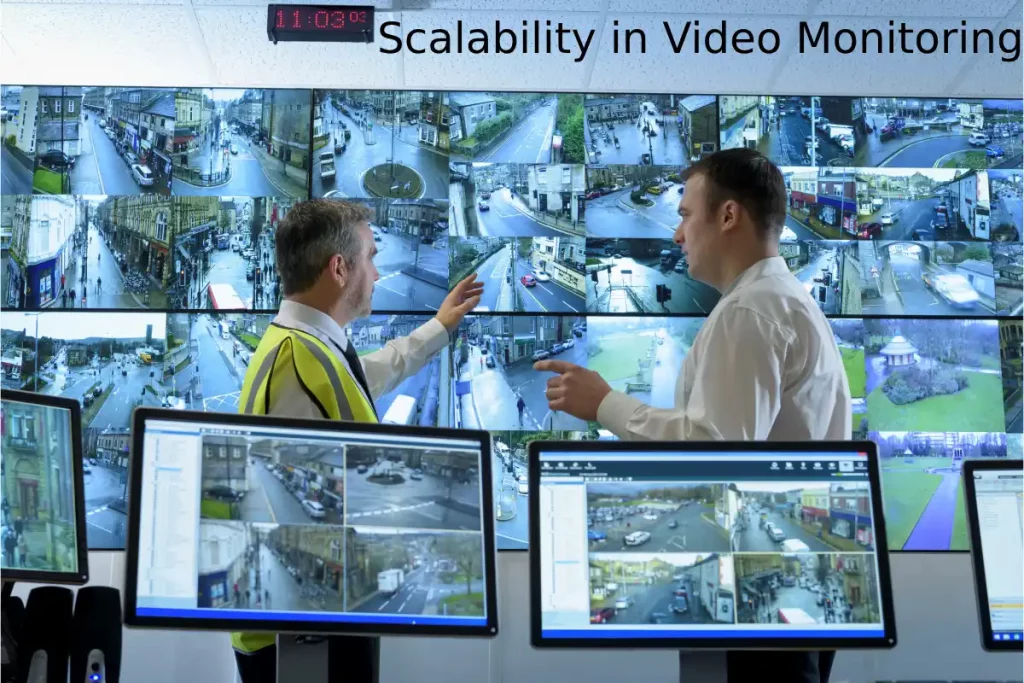Video monitoring systems have been pivotal tools in business operations, security management, and even in smart home configurations, promising the power of sight in areas where human vigil cannot reach. However, when it comes to deploying these systems in various types of spaces, one size does not fit all. The real challenge lies in adapting the systems while ensuring seamless operation, quick response, and thorough coverage – a feature we term as scalability. In simple words, scalability involves the resizing of video surveillance systems, both in terms of coverage and capabilities, based on the context of the location.
Table of Contents
Understanding your Space
Before embarking on the journey of deploying video monitoring setups, understanding the nature of the space is paramount.
- Type of Premises:Whether it’s a small retail store or a large industrial complex, the choice of cameras, the quantity, and the placement will have significant bearing.
- The Purpose of Surveillance:The objective – whether it’s crowd control, theft deterrence, or process monitoring, also informs the types of cameras and their positions.
- The Environmental Factors:Outdoor and indoor spaces have different challenges, influencing the type of camera and supporting infrastructures.
Picking the right kind of Video Monitoring Services is a pivotal step. Whether it’s IP-based, analogue or HD-SDI based systems, the choice depends entirely on one’s specific requirements.
Flexibility in Installation
Adapting systems to different spaces calls for flexibility in the installation process.
- Choosing Appropriate Cameras:From bullet, dome, PTZ to hidden cameras – each offers unique advantages to tackle varying surveillance scenarios.
- Camera Placement Strategies:From wall-mounted, ceiling installations to standalone manners, placement can be adapted to enhance coverage.
- Wired or Wireless Setup:Depending on the premises specifics and technological infrastructure, choice between cabled and wireless installations can be made.
Flexibility allows for a well-rounded surveillance setup ideal for the given space, along with contributing towards effective scalability.
Adapting to scalability demands is crucial in the world of video monitoring. The dynamics of the installation process are pivotal to effectively contextualize the monitoring system to the given space. Flexibility here is the key, enabling us to shape the core elements of the surveillance system – the choice of cameras, their placements, and the nature of their setup – wired or wireless.
Choosing the most suitable cameras for surveillance involves comprehending the premises’ specific needs. For instance, high traffic areas may benefit from the pan, tilt, and zoom (PTZ) functions of certain cameras. Alternatively, for locations demanding subtle surveillance, hidden cameras may be the ideal choice. The richness of today’s market provides a range of camera types to cater to varying surveillance scenarios.
Varied Networks for Varied Spaces
The network forms the backbone of any video monitoring system.
- Choosing the Right Network:Whether it’s a Local Area Network (LAN), Wide Area Network (WAN), Wireless LAN (WLAN), or Virtual Private Network (VPN), each offers different capacities and coverages.
- Deciding on Centralized or Decentralized Architecture:Depending on the building architecture and surveillance needs, either a centralized or decentralized network setup can be chosen.
- Understanding Bandwidth needs:Depending on the video quality and duration of storage, the necessary bandwidth can be estimated.
Image processing, video analysis, and decisions taken based on these data often rely on how robust the network architecture is.
Towards Smart Monitoring Solutions
Leveraging advanced technologies and artificial intelligence has created a paradigm shift in video surveillance.
- Advanced Video Analytics:Intelligent systems analyze crowds, recognize faces, detect unusual activities and send alerts autonomously.
- Integrating with IoT:Merging with other IoT devices like alarms, door locks, lights, etc., elevates the effectiveness of surveillance.
- Securing the Systems:With cyber threats on the rise, securing surveillance systems has become equally important.
The future of scalability in video monitoring will significantly be influenced by these smart technologies and how these are incorporated in cctv monitoring services.
Conclusion
Scalability in video monitoring isn’t merely about accommodating different spaces; it’s about intelligently adapting to each space’s unique needs while maintaining impeccable surveillance. Detailed understanding of premises, flexibility in installation, robust network architectures, and embracing smart solutions contribute towards enhancing scalability. As we continue embracing digital transformation, this concept of scalability will drive the future of video monitoring systems, creating spaces that are not just secure but efficient as well.


Review Scalability in Video Monitoring: Adapting Systems for Different Spaces.